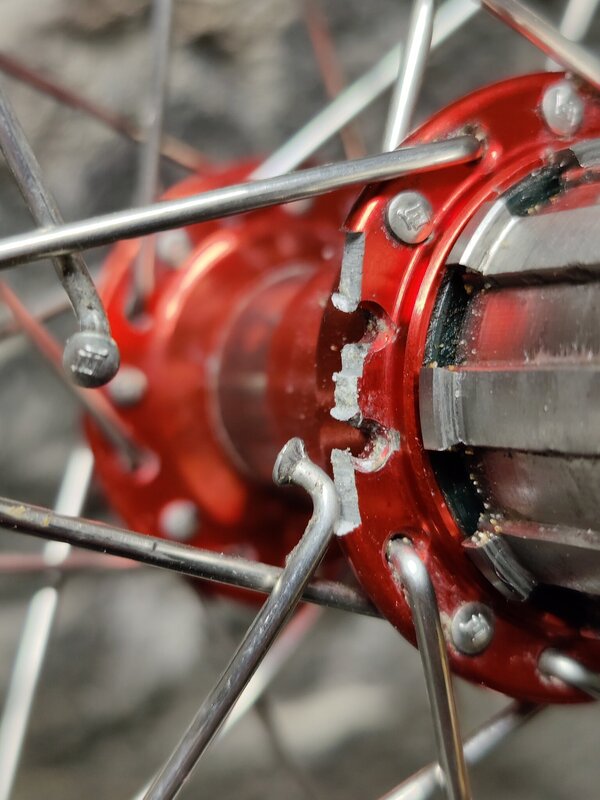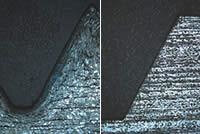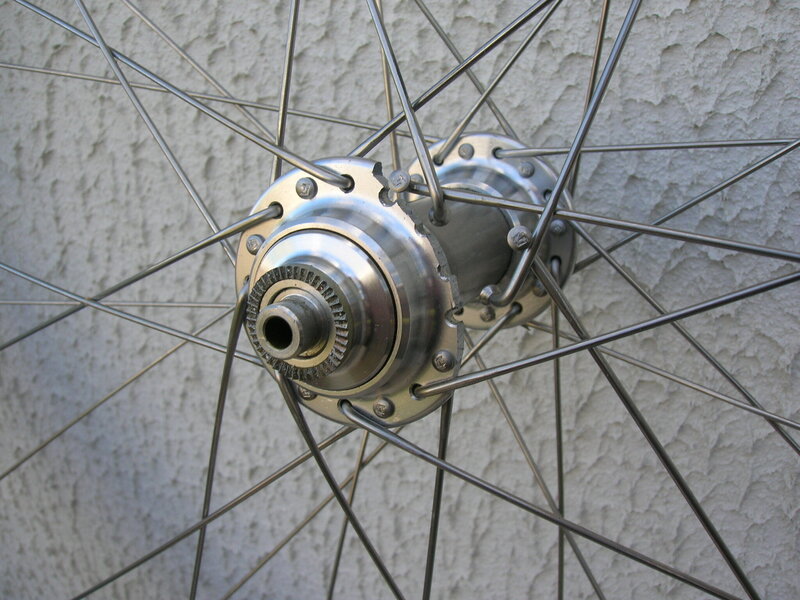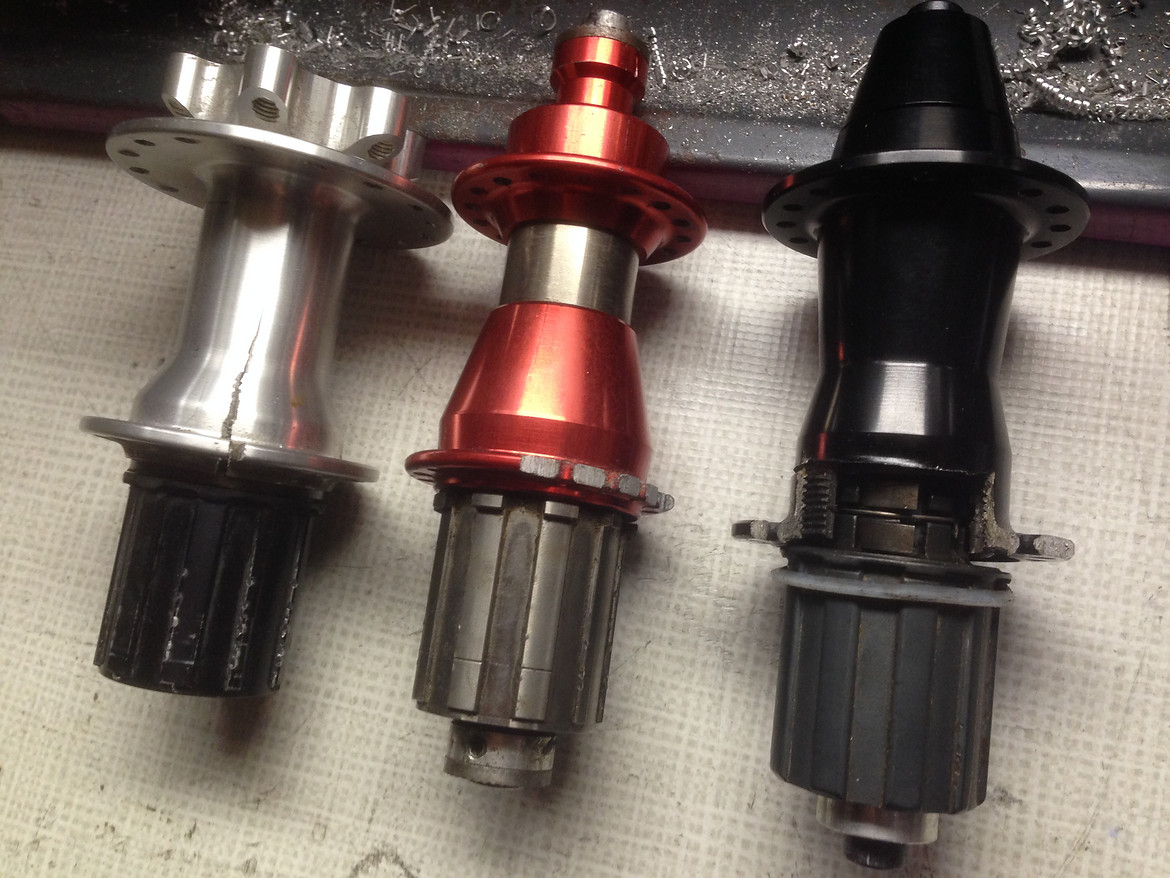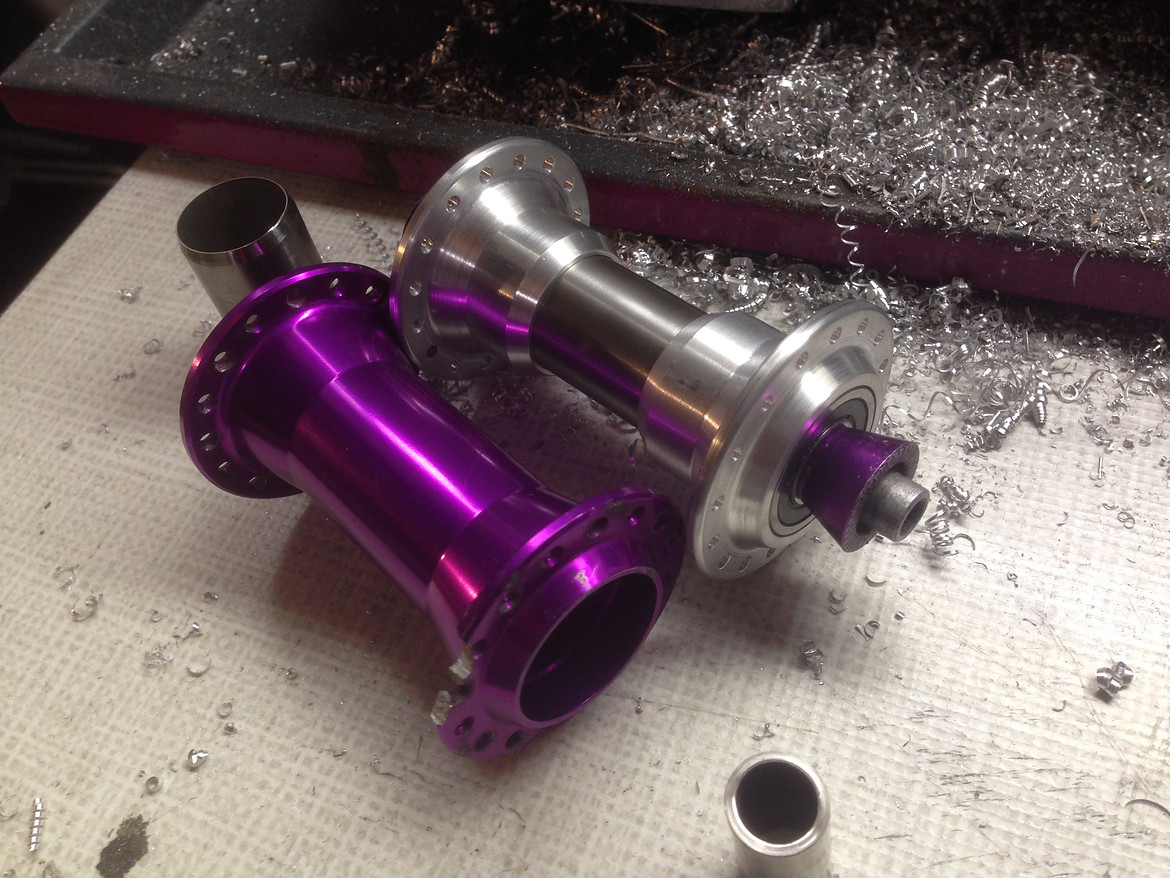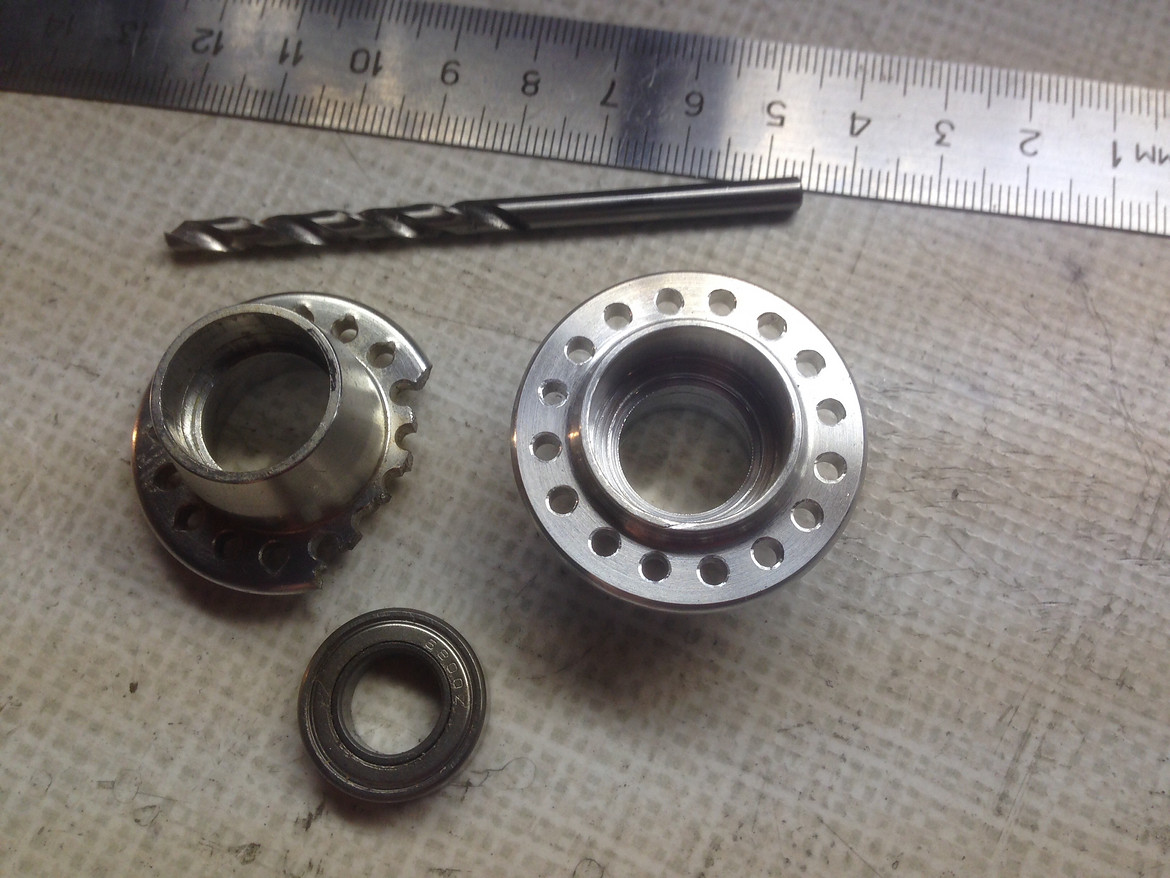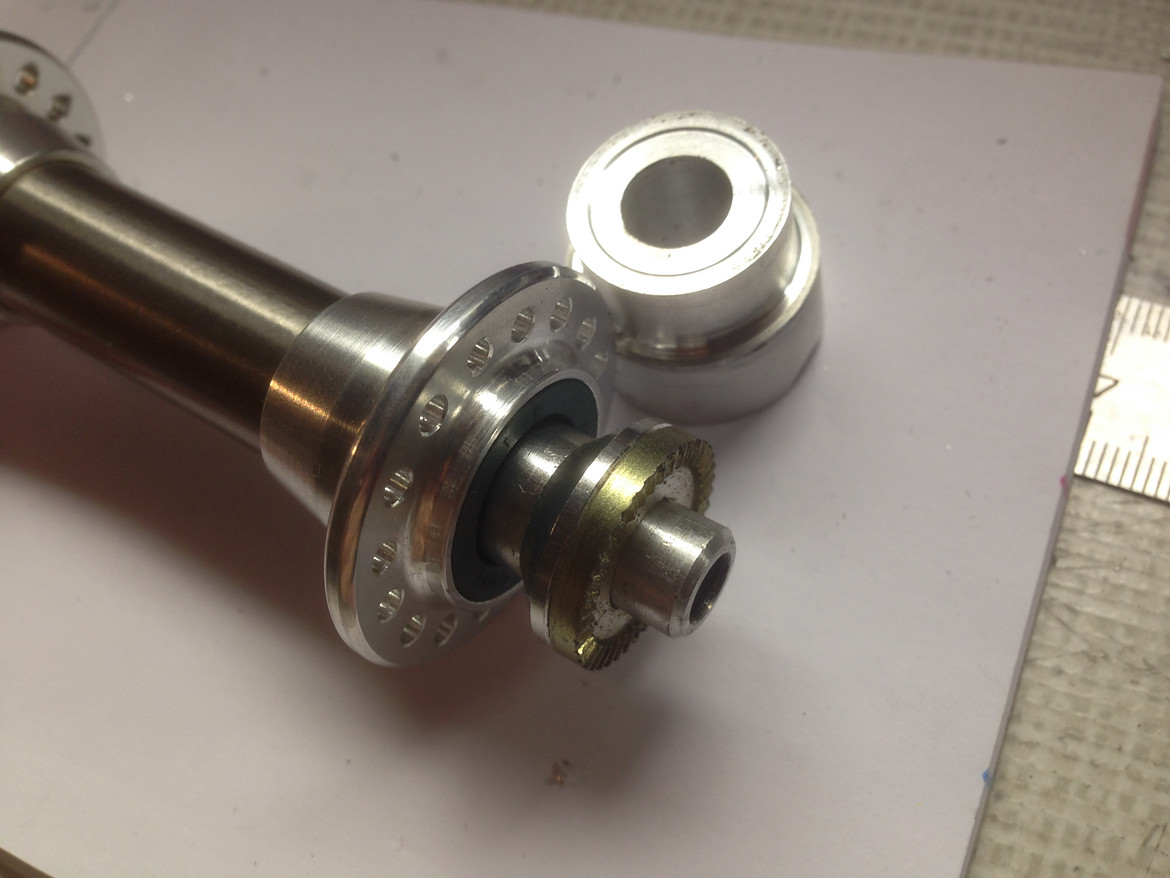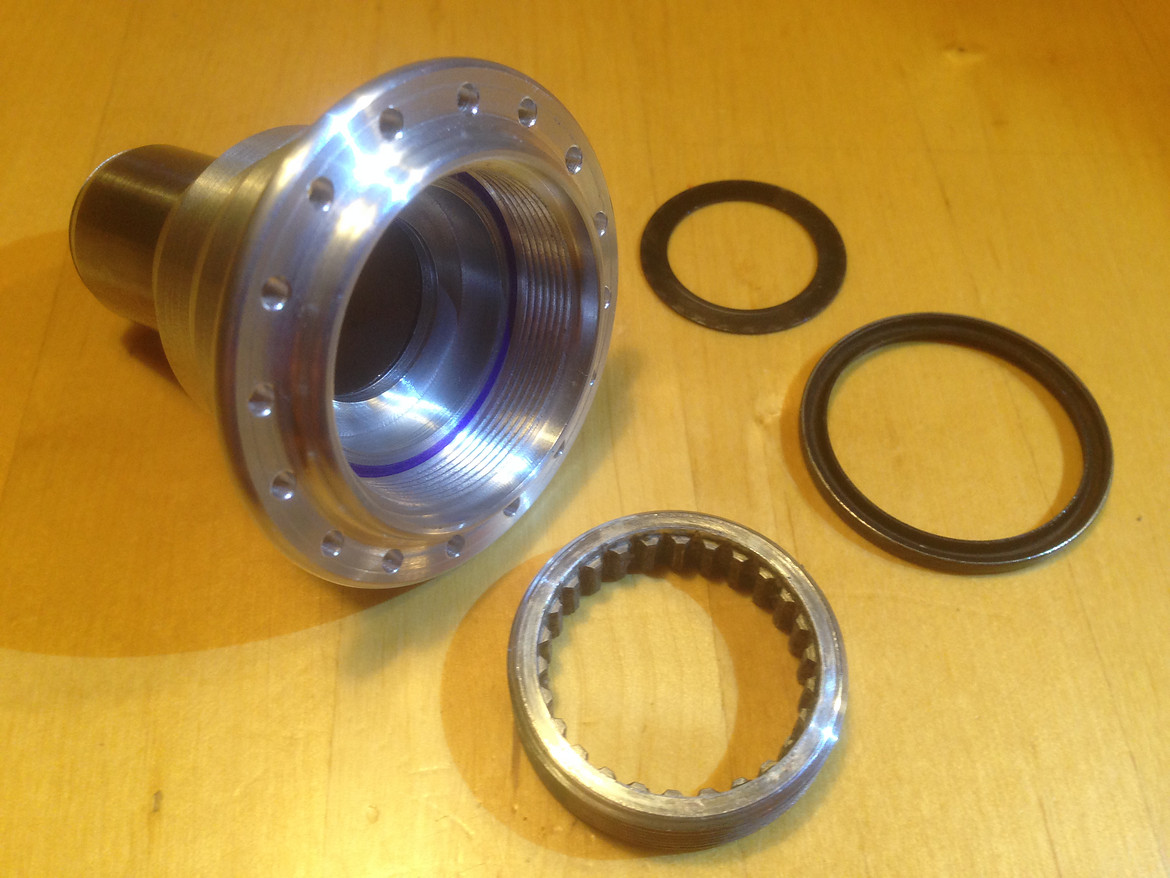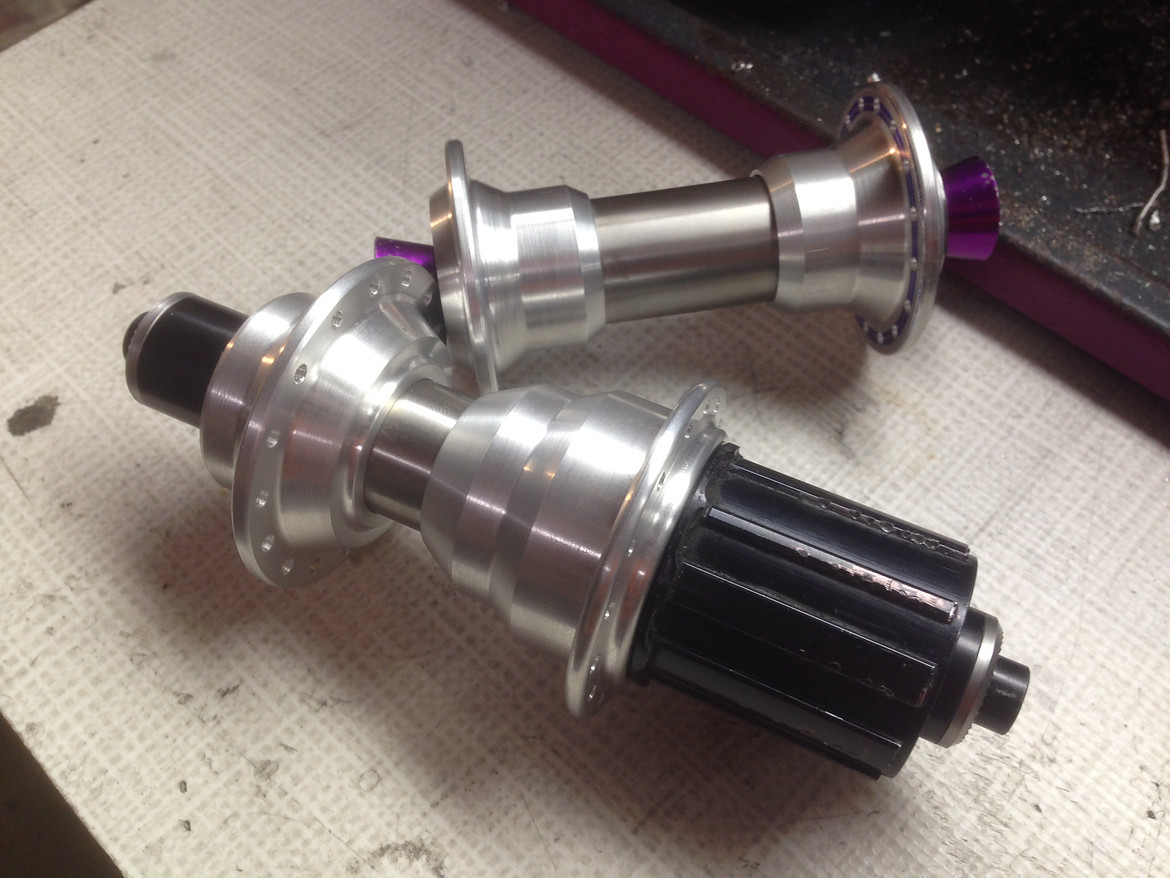So i'm absolutely convinced the cold weather wrecks these hubs... i've had quite a few of them, some disintegrated, some absolutely mint & still going strong. The mint ones have all come from homes with integral garages that are clearly a lot warmer then the british garden shed, the dead ones from the latter. Not certain on why they go where yours did but the ones where the flanges crack I think is because the Alloy contracts more/faster than the Ti centres - thus putting greater strain on the friction fit on the flanges.
I keep my minty v.early purple TiGlide wheels in the loft, wrapped in cut off bits of lagging, after every winter I breath a sigh of relief they have survived lol!
It could be a humidity and dampness problem, as well as a temperature problem.
Some aluminium grades are known to be susceptible to stress corrosion cracking. That means crack growth could be dramatically accelerated in the presence of all three of these factors:
1. Stress
2. Humidity
3. A suitable electrolyte
With respect to each of these factors:
1. The stress is always there (unless the spokes are slackened)
2. The average British shed probably has a fairly high humidity for several months every year. I have always had my weather station wireless sensor in my shed. And the measurements always suggest that for a large part of the year, humidity is far higher in my shed than it is indoors at the base station.
3. If the bike is ridden on salty/gritted roads, then that provides the electrolyte. And as salt is hygroscopic, it also ensures that any crack that is present will remain permanently wet due to the damp shed environment.
I'm not sure what those early Hope hubs were made of, but I note that 7075 grade was a very popular choice for 1990s boutique bike parts, and that there are articles online suggesting that 7075 is susceptible to stress corrosion cracking in the presence of NaCl (also known as table salt and grit salt. Also, some people may have cleaned their bikes using detergents that contain salt.
With respect to temperature, the ductile to brittle temperature transition could be a factor. And that is when things start getting complicated and somewhat academic, because you need to delve into fracture mechanics. and look into data for fracture toughness. If I recall correctly, cracks can be initiated and grow by a variety of mechanisms. For example:
1. Fatigue (repeated load-unload cycles, which is exactly what happens to the spokes and hub flanges with each wheel revolution)
2. Creep (only really applies at high temperatures, such as turbine blades, or with very low meting point alloys)
3. Stress corrosion cracking (stress in the presence of moisture and an electrolyte)
4. A combination of 1, 2 and 3.
Once a crack has propagated sufficiently far through the material, then the material can fail in a brittle manner, as the crack propagates in a rapid uncontrollable manner. This final stage, involving sudden and catastrophic failure, is governed by the
fracture toughness of the material. Unfortunately, history is littered with engineering examples of crack initiation (or production methods that led to cracks in the finished article), followed by a period of crack growth, and ending with sudden and catastrophic failure. And sometimes it was poor design that led to high concentrations of stress in small areas of material.
Perhaps the best known example of this is found in
the Liberty Ships of WW2. The traditional method of riveted construction was replaced with welded construction so as to speed up production of ships during wartime. Unfortunately what no one realised at the time was that the welds had a rather low fracture toughness at the low temperatures the ships were exposed to in the North Atlantic. This caused the sudden and catatrophic failure of many Liberty Ships. The resulting investigation into these failures is often credited with advancing interest and academic study in the area of fracture mechanics.
Typically, fracture mechanics is of importance in industries where sudden and catastrophic failure is an unacceptable outcome. That is primarily defence, aerospace, power generation, and nuclear, although some other areas are also important, such as petro-chemical (refineries, pipelines etc). What this means in practice is that after production, parts must be inspected for the presence of cracks, using methods such as dye penetrant, ultrasonic and x-ray. And once in service, regular inspections must take place to detect and monitor crack initiation and growth.
For what it's worth, my Hope hubs have always been kept indoors in a warm dry environment, and so far they have not cracked.
 .
.
